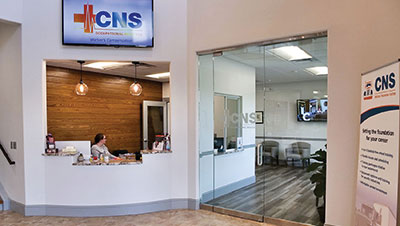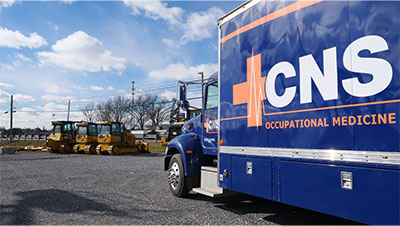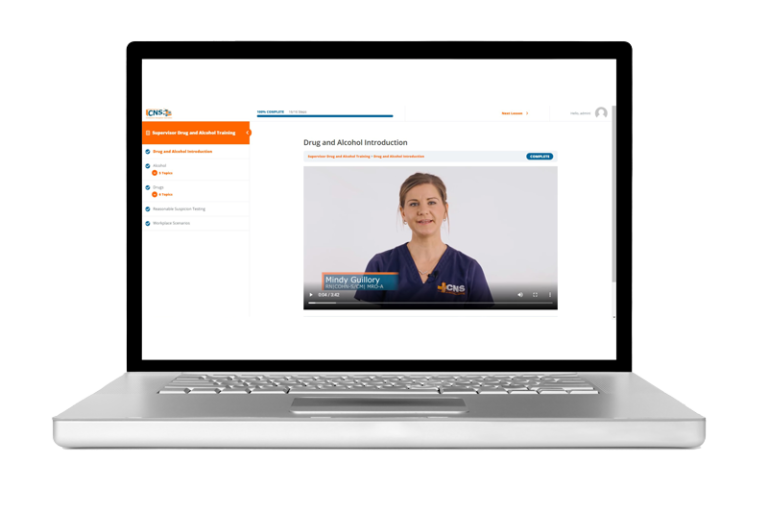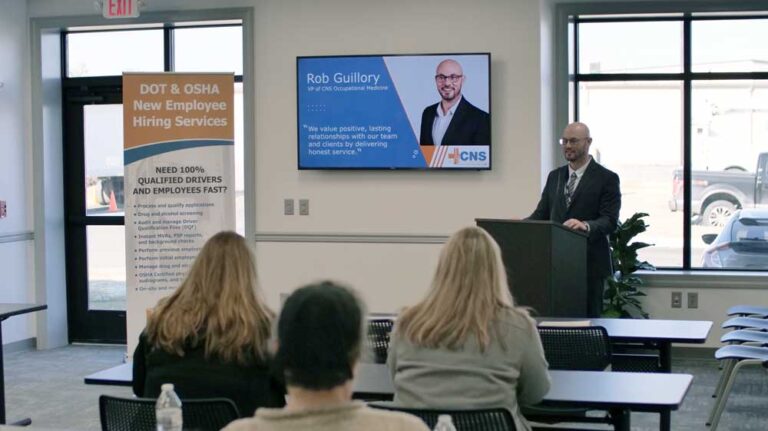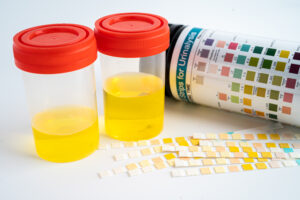Utilized heavily in sheet metal construction, especially in the interest in airplanes, hexavalent chromium can be toxic and requires employers to have a respiratory program and testing requirements.
OSHA has separate standards for Chromium Cr(VI) exposures for small businesses and in general industry, shipyards, and construction. Most of the requirements are the same for all sectors.
Let’s dive into the hazards around hexavalent chromium and what the respiratory program looks like.
[Related: Stricter OSHA Rule In Effect For Silica Exposure and Silica Respiratory Testing]
What is hexavalent chromium?
Hexavalent chromium compounds are man-made and a toxic form of the element chromium. These compounds are widely used in many different industries, such as sheet metal construction, and have many industrial sources, such as:
- chromate pigments in dyes, paints, inks, and plastics
- chromates added as anti-corrosive agents to paints, primers and other surface coatings
- chrome plating by depositing chromium metal onto an item’s surface using a solution of chromic acid
- particles released during smelting of ferrochromium ore
- fume from welding stainless steel or nonferrous chromium alloys
- impurity present in portland cement, a hydraulic binding material
Examples of Cr(VI) compounds include:
- ammonium dichromate ((NH4)2Cr2O7)
- calcium chromate (CaCrO4)
- chromium trioxide or chromic acid (CrO3)
- lead chromate (PbCrO4)
- potassium chromate (K2CrO4)
- potassium dichromate (K2Cr2O7)
- sodium chromate (Na2CrO4)
- strontium chromate (SrCrO4), and
- zinc chromate (ZnCrO4)
Employers can consult their suppliers or examine material safety data sheets (MSDSs) to identify Cr(VI)-containing materials that are present in the workplace.
Cr(VI) can also be formed when performing “hot work” such as welding on stainless steel, melting chromium metal, or heating refractory bricks in kilns. In these situations, the chromium is not originally hexavalent, but the high temperatures involved in the process result in oxidation that converts the chromium to a hexavalent state.
What is the Permissible Exposure Limit for Cr(VI)?
The standards establish an 8-hour time-weighted average exposure limit of 5 micrograms of Cr(VI) per cubic meter of air (5 µg/m3 ).
This means that over the course of any 8-hour work shift, the average exposure to Cr(VI) cannot exceed 5 µg/m3.
Employers can choose between two options for performing exposure determinations:
- a scheduled monitoring option, or
- a performance-oriented option
In addition, employers must comply with certain requirements regarding employee notification of the results of the exposure determination, accuracy of measurement methods, and observation of monitoring.
The Cr(VI) standards do not apply in three situations:
- exposures that occur in the application of pesticides
- exposures to portland cement, and
- where the employer has objective data demonstrating that Cr(VI) concentrations cannot exceed 0.5 micrograms per cubic meter of air as an 8-hour time-weighted average under any expected conditions of use
How hexavalent chromium can harm employees
Workplace exposure to hexavalent chromium may cause the following health effects:
- lung cancer in workers who breathe airborne hexavalent chromium
- irritation or damage to the nose, throat, and lung (respiratory tract) if hexavalent chromium is breathed at high levels
- irritation or damage to the eyes and skin if hexavalent chromium contacts these organs in high concentrations.
Breathing in high levels of hexavalent chromium can cause irritation to the nose and throat. Symptoms may include runny nose, sneezing, coughing, itching and a burning sensation.
Repeated or prolonged exposure can cause sores to develop in the nose and result in nosebleeds. If the damage is severe, the nasal septum (wall separating the nasal passages) develops a hole in it (perforation).
Some employees become allergic to hexavalent chromium so that inhaling chromate compounds can cause asthma symptoms such as wheezing and shortness of breath.
Some employees can also develop an allergic skin reaction, called allergic contact dermatitis. This occurs from handling liquids or solids containing hexavalent chromium.
How employees can be exposed to hexavalent chromium
Employees can inhale airborne hexavalent chromium as a dust, fume, or mist while:
- producing chromate pigments and powders; chromic acid; chromium catalysts, dyes, and coatings
- working near chrome electroplating
- welding and hot-working stainless steel, high chrome alloys and chrome-coated metal
- applying and removing chromate-containing paints and other surface coatings.
Skin exposure can occur during direct handling of hexavalent chromium-containing solutions, coatings, and cements.
Respiratory protection from hexavalent chromium
When engineering and work practice controls cannot reduce employee exposure to Cr(VI) to within the PEL, employers must provide employees with respirators.
Specifically, respirators are required during:
- Periods necessary to install or implement feasible engineering and work practice controls;
- Work operations, such as maintenance and repair activities, for which engineering, and work practice controls are not feasible;
- Work operations for which an employer has implemented all feasible engineering and work practice controls and such controls are not sufficient to reduce exposures to or below the PEL;
- Work operations where employees are exposed above the PEL for fewer than 30 days per year, and the employer has elected not to implement engineering and work practice controls to achieve the PEL; or
- Emergencies (i.e., uncontrolled releases of Cr(VI) that result in significant and unexpected exposures; see definition of “Emergency” at pg. 5).
Where respirator use is required, the employer must establish a respiratory protection program in accordance with OSHA’s Respiratory Protection standard (29 CFR 1910.134).
The respiratory protection program addresses procedures for properly selecting and using respirators in the workplace.
Protecting employees from health hazards caused by hexavalent chromium
The new OSHA workplace standard requires employers to:
- limit eight-hour time-weighted average hexavalent chromium exposure in the workplace to 5 micrograms or less per cubic meter of air
- perform periodic monitoring at least every 6 months if initial monitoring shows employee exposure at or above the action level (2.5 micrograms per cubic meter of air calculated as an 8-hour time-weighted average)
- provide appropriate personal protective clothing and equipment when there is likely to be a hazard present from skin or eye contact
- implement good personal hygiene and housekeeping practices to prevent hexavalent chromium exposure
- prohibit employee rotation as a method to achieve compliance with the exposure limit (PEL)
- provide respiratory protection as specified in the standard
- make available medical examinations to employees within 30 days of initial assignment, annually, to those exposed in an emergency situation, to those who experience signs or symptoms of adverse health effects associated with hexavalent chromium exposure, to those who are or may be exposed at or above the action level for 30 or more days a year, and at termination of employment
Choose CNS Occupational Medicine for your Respirator Physical and Fit Test
Our Occupational Medicine Team follows a specific process for every employee that is tested, including a respirator fit test
- Prior to any employee evaluation, employers are required to complete an information evaluation form on each employee
- The employee will be evaluated using the mandatory OSHA “Respirator Medical Evaluation Questionnaire”
- When an employee is medically cleared to wear a respirator, the PLHCP clinician will provide the employee and employer with a written medical opinion for respirator use
- After being medical cleared for respirator use, the employee may undergo a respirator fit test
Schedule your respirator physical, medical exam, and fit test today.
For more information, contact us at 800.551.9816 or info@cnsoccmed.com.

